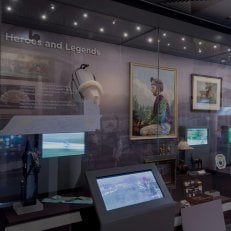What’s in a name?
This week, we take a look at naming opportunities. Can they help raise donor sights and what do you need to consider when including them in your fundraising strategy?
Buy a brick
The ubiquitous ‘Buy a Brick’ device in capital fundraising is generally set at a very low rate and sets sights barely above the ground! A very worrying variation on this theme is where a promise is made to record each donor’s name on the ‘brick’ and the cost of fulfilling this promise exceeds the total funds raised!
Perhaps the most heinous example ever encountered by one Craigmyle consultant was a suggestion for a campaign to raise £500,000 for a theatre with an estimated catchment population of 1 million souls. The proposed approach was: ‘The Theatre Royal you all want see will cost you each just 50p!’ (Sub-text – don’t give more than 50p!) Thankfully in this case wisdom prevailed and the idea was dumped.
The ‘Name a Seat’ option is normally set at a higher level, but do encourage donors to buy one for each member of the family, or all members of the club or all residents of the street!
Major Gifts
Naming opportunities offer major gift donors a tangible benefit to supporting your charity. Naming a room or a building in recognition of substantial support can be a very fitting tribute. However, in deploying this tactic do beware the dangers of the shopping list. Imagine a list which offers the following options:
Library £ 500,000, Music Room £300,000, Art Studio £150,000
A donor is passionate about art and opts for the Art Studio. It is almost certainly true to say that most donors who give £150,000 could equally afford to give £300,000. First negotiate the level of support a donor wishes to give and then negotiate any naming rights in which they may be interested.
Also, as part of a large capital campaign, naming opportunities can be priced above their actual cost, with a contribution towards management and maintenance.
Success also depends on creating a great donor experience around naming opportunities. Tailor your proposal to your donors. Use what you know about your donor to offer naming opportunities that have the greatest degree of value for them.
Conclusion
So, this tactic is certainly two-edged and possibly more commonly lowers sights rather than raises them. However, it can be effective part of the fundraising mix if thought through. If you do want to offer naming opportunities, you will need to have internal agreement/guidelines on managing naming opportunities, which will probably include some indication of ranges of gifts that warrant respective naming rights, but this is not for circulation.
Craigmyle Fundraising Consultants enable UK charities and not-for-profit organisations to realise their objectives through fundraising by providing expertise tailored to each client that draws upon our consultants’ hands-on experience of strategy and implementation, collective team knowledge and our 60-year track record. Get in touch with us!





